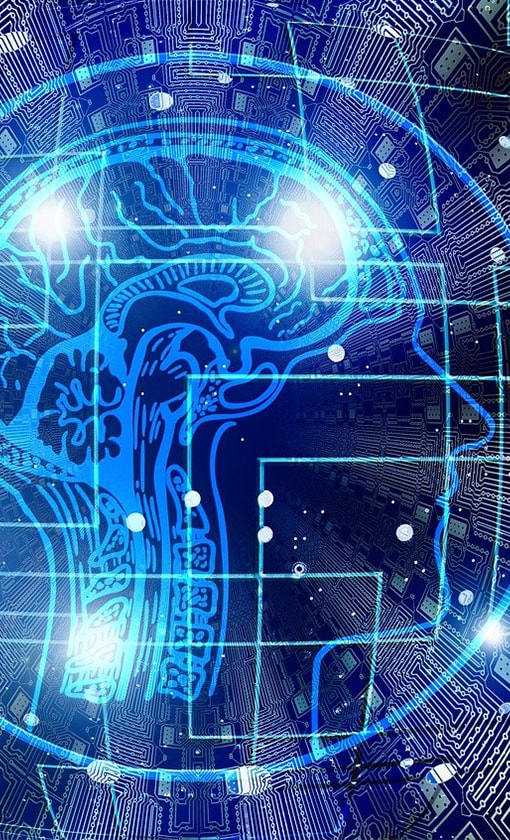1. Introduction
In today's fast-paced digital landscape, choosing the right storage solution
is crucial for businesses looking to maintain efficiency and competitiveness.
The decision between a 2.5-inch Solid State Drive (SSD) and a 2.5-inch Hard Disk
Drive (HDD) can significantly impact your business operations, especially in
terms of performance, reliability, and cost-effectiveness. This comprehensive
guide delves into the key differences between these two storage devices, helping
you make an informed decision tailored to your specific needs.
2. Understanding the Basics: What is a 2.5-Inch SSD?
A 2.5-inch SSD, or Solid State Drive, represents a significant leap in data
storage technology compared to traditional hard drives. Unlike HDDs, SSDs do not
rely on spinning disks or moving mechanical parts to read and write data.
Instead, SSDs use NAND flash memory chips, which allow for faster data access
and reduced latency. The absence of moving parts also means that SSDs are more
durable and resistant to physical damage, such as drops and shocks, making them
an ideal choice for portable devices and environments where reliability is
paramount.
The key component within an SSD is the NAND flash memory, which is available
in various configurations, including Single-Level Cell (SLC), Multi-Level Cell
(MLC), Triple-Level Cell (TLC), and Quad-Level Cell (QLC). Each of these
configurations offers different trade-offs between speed, durability, and
storage density. For instance, SLC is the fastest and most durable but also the
most expensive, making it suitable for enterprise-grade applications. On the
other hand, QLC provides higher storage density at a lower cost, but with
reduced performance and durability, making it more suitable for consumer-level
products.
Expanded Analysis: SSDs have seen widespread adoption in
various industries, including data centers, where their high IOPS (Input/Output
Operations Per Second) capabilities drastically reduce the time required for
data processing tasks. This is particularly beneficial in environments that
demand real-time analytics, such as financial trading platforms, where even
milliseconds of delay can lead to significant financial losses.

3. What is a 2.5-Inch HDD?
A 2.5-inch HDD, or Hard Disk Drive, is a traditional storage device that has
been the backbone of data storage for several decades. HDDs store data on
spinning magnetic disks, known as platters, which are read and written to by a
mechanical arm. This arm moves across the surface of the platters to access
data, which introduces latency and limits the speed at which data can be read or
written.
The technology behind HDDs dates back to the 1950s, with IBM being one of the
pioneers in developing this form of storage. Over the years, HDDs have evolved
to offer greater storage capacity at a lower cost, making them a popular choice
for bulk storage and archival purposes. Despite their lower speed compared to
SSDs, HDDs continue to be used in applications where cost per gigabyte is a
critical factor.
Expanded Analysis: HDDs are often used in scenarios where
large amounts of data need to be stored cost-effectively, such as in video
surveillance systems, where continuous recording requires extensive storage
capacity. In such applications, the higher latency and lower speed of HDDs are
not as critical as the need for large, inexpensive storage.
4. Performance Comparison: Speed, Durability, and Reliability
When it comes to performance, the difference between SSDs and HDDs is stark.
SSDs are designed to deliver lightning-fast read and write speeds, with typical
2.5-inch SSDs offering sequential read speeds of up to 550MB/s and write speeds
of up to 520MB/s. In contrast, even the fastest 2.5-inch HDDs are limited to
read/write speeds of around 100-150MB/s. This means that SSDs can boot operating
systems, launch applications, and transfer files several times faster than
HDDs.
In-Depth Analysis: One of the primary reasons for the
superior speed of SSDs is the absence of moving parts. In an HDD, the mechanical
arm must physically move to different parts of the platter to access data, which
introduces a delay known as seek time. Additionally, the platter itself must
spin to the correct position, adding rotational latency. In contrast, SSDs can
access data instantly, without any mechanical delays, resulting in much faster
overall performance.
Moreover, SSDs are more durable than HDDs due to their solid-state design.
The lack of moving parts means that SSDs are less susceptible to damage from
physical shocks or vibrations, which is particularly important in mobile devices
such as laptops. HDDs, with their delicate moving parts, are more prone to
failure if subjected to rough handling.
Case Study: In a professional environment, such as a video
editing studio, the performance benefits of SSDs are even more pronounced. Video
editing software often requires fast access to large files, and the high-speed
performance of SSDs can significantly reduce the time needed to render and
export video projects. This not only improves productivity but also allows for
more complex edits that would be impractical with slower storage solutions.

5. Energy Efficiency and Power Consumption
Another critical factor to consider when choosing between SSDs and HDDs is
power consumption. SSDs generally consume less power than HDDs, especially
during data-intensive tasks. This is because SSDs do not require the energy
needed to spin platters or move mechanical arms, resulting in lower power draw
and less heat generation.
For businesses operating large data centers or using multiple storage
devices, the energy efficiency of SSDs can lead to significant cost savings.
Lower power consumption means reduced electricity bills and less strain on
cooling systems, contributing to a more environmentally friendly and
cost-effective operation.
Expanded Analysis: In portable devices such as laptops, the
lower power consumption of SSDs translates to longer battery life, allowing
users to work longer without needing to recharge. This is particularly
advantageous for professionals who need to work on the go, such as field
engineers or sales representatives.
Furthermore, the reduced heat generation of SSDs not only enhances their
reliability but also contributes to a quieter working environment. In contrast,
HDDs, with their spinning platters and moving parts, generate more heat and
noise, which can be disruptive in a quiet office setting.
6. Price Comparison: Initial Cost vs. Long-Term Value
The cost of storage devices is a critical consideration for any business, and
there is a significant difference in the upfront cost between SSDs and HDDs. As
of now, SSDs are generally more expensive per gigabyte than HDDs. However, the
price gap has been narrowing over the years as SSD technology becomes more
advanced and widespread.
In-Depth Analysis: While the initial investment in SSDs may
be higher, it's essential to consider the total cost of ownership (TCO) over the
lifespan of the device. SSDs tend to have a longer lifespan due to their
durability and lack of moving parts, which reduces the likelihood of mechanical
failure. This can result in lower maintenance costs and fewer replacements over
time, making SSDs a more cost-effective solution in the long run.
Moreover, the performance benefits of SSDs can lead to increased
productivity, which can offset the higher upfront cost. For example, in a
business environment where time is money, the faster data access and reduced
downtime provided by SSDs can lead to significant operational efficiencies.
Case Study: Consider a data center that switches from HDDs
to SSDs. The initial cost of the upgrade may be substantial, but the long-term
benefits include reduced energy consumption, lower cooling costs, and increased
server uptime. Over time, these savings can exceed the initial investment,
resulting in a positive return on investment (ROI).

7. Use Cases: When to Choose SSDs Over HDDs
Given the differences in performance, durability, and cost, the choice
between SSDs and HDDs often depends on the specific needs of your business.
For High-Performance Applications: SSDs are the clear choice
for applications that require fast data access and processing. This includes
tasks such as video editing, software development, database management, and
running virtual machines. In these scenarios, the speed and reliability of SSDs
can significantly enhance productivity and reduce downtime.
For Cost-Effective Storage: HDDs are still a viable option
for applications where cost per gigabyte is more important than speed. This
includes use cases such as data archiving, backup storage, and large-scale video
surveillance. In these scenarios, the lower cost of HDDs allows for the storage
of vast amounts of data without breaking the budget.
Hybrid Storage Solutions: Some businesses may benefit from a
hybrid approach that combines the strengths of both SSDs and HDDs. For example,
a common strategy is to use an SSD as the primary drive for the operating system
and applications, ensuring fast boot times and quick access to frequently used
data. Meanwhile, an HDD can be used as a secondary drive for storing large files
that do not require fast access, such as backups or multimedia files.
Case Study: A small business with a limited IT budget might
choose to use SSDs for their critical applications, such as customer
relationship management (CRM) software, while using HDDs for less frequently
accessed data, such as archived emails and documents. This approach provides a
balance between performance and cost, ensuring that the business gets the most
value from its investment.
8. Future Trends: The Evolution of SSD and HDD Technology
As technology continues to advance, both SSDs and HDDs are evolving to meet
the changing demands of businesses.
SSDs: The future of SSD technology is promising, with
ongoing developments aimed at increasing storage capacity, reducing costs, and
improving durability. Innovations such as 3D NAND technology, which stacks
memory cells vertically to increase density, are allowing SSDs to offer higher
capacities at more affordable prices. Additionally, advancements in NVMe
(Non-Volatile Memory Express) interfaces are further boosting SSD performance by
reducing latency and increasing data transfer speeds.
HDDs: While SSDs are becoming increasingly popular, HDD
technology is also advancing. Manufacturers are developing new techniques to
increase the storage density of HDDs, such as Shingled Magnetic Recording (SMR)
and Heat-Assisted Magnetic Recording (HAMR). These technologies enable HDDs to
store more data on each platter, helping to keep HDDs relevant in the era of big
data.
In-Depth Analysis: In the coming years, we may see a
continued trend towards the adoption of SSDs for performance-critical
applications, while HDDs may remain the go-to solution for large-scale data
storage. However, the lines between these technologies are likely to blur as
both continue to improve, leading to even more options for businesses seeking
the best storage solution.
9. Conclusion: Making the Right Choice for Your Business
Choosing between a 2.5-inch SSD and a 2.5-inch HDD ultimately depends on your
business's specific needs and budget. SSDs offer unparalleled speed, durability,
and energy efficiency, making them ideal for applications where performance is
paramount. HDDs, on the other hand, provide a cost-effective solution for bulk
storage and archival purposes, where high speed is less critical.
As Ssd manufacturer , Kingspec specialize in providing high-quality SSD solutions tailored
to meet the unique demands of businesses across various industries. Whether
you're looking to upgrade your existing infrastructure or deploy a new storage
solution, our team of experts is here to help you make the best decision for
your business. Contact us today to learn more about how our SSDs can enhance
your operations and deliver exceptional value.
























